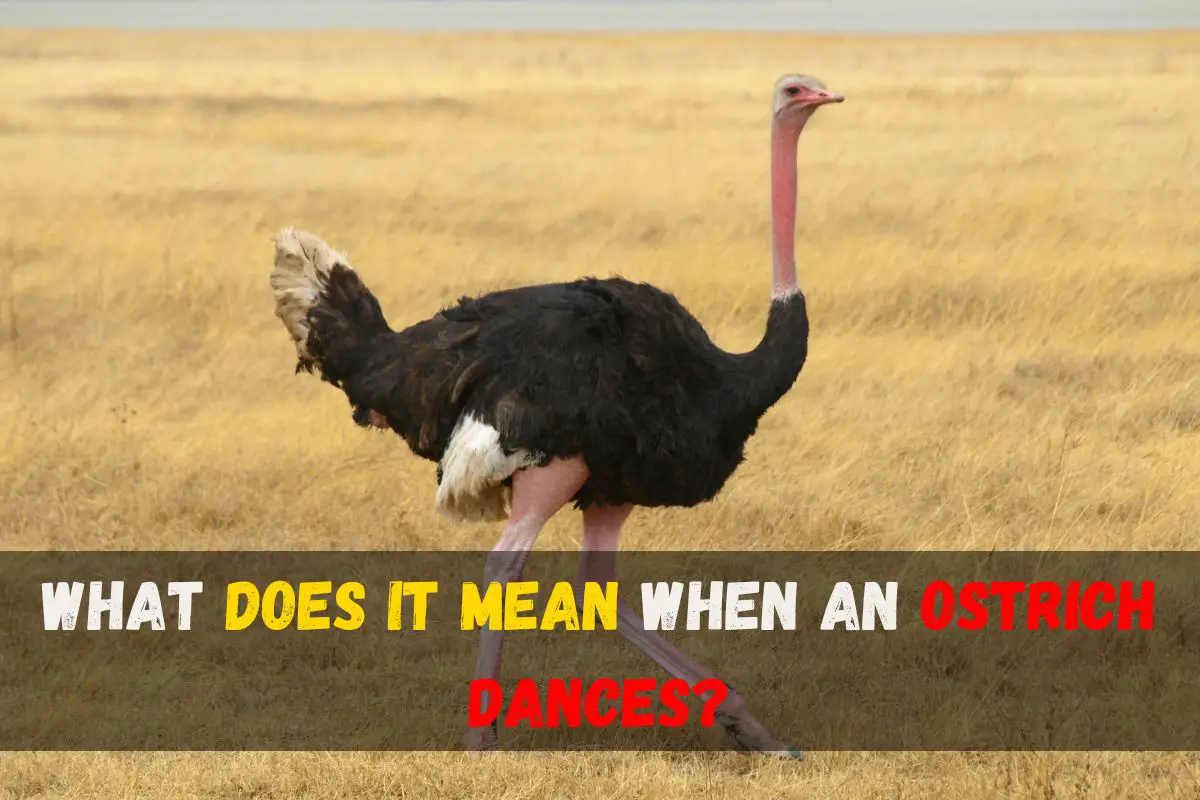Why do ostriches dance for humans?
Though famously known for their inability to fly, Ostriches possess a unique and captivating behavior: dancing. This behavior, often observed in captivity, raises the question: why do ostriches engage in such a peculiar activity specifically for humans? The answer lies in understanding ostrich behavior and their interaction with humans. Ostriches are naturally curious and social animals, prone to displaying various behaviors in response to stimuli. When in the presence of humans, particularly in captive settings where they’re accustomed to human presence, ostriches may perceive human interaction as a form of social engagement. Dancing could be a display of excitement, curiosity, or even an attempt to communicate with their human observers. This behavior highlights interspecies interactions’ complex and fascinating nature and underscores the importance of understanding animal behavior in diverse contexts.
Ostrich Sleeping Style
Ostrich Behavior
Natural Habits and Characteristics
Ostriches are the most significant and heaviest birds on Earth, native to the savannas and woodlands of Africa. They are flightless, with powerful legs adapted for running up to 45 miles per hour. Their large eyes provide excellent vision, helping them detect predators from a distance. Ostriches are omnivores, feeding on a diet that includes plants, seeds, insects, and small animals. Socially, by nature, they often form groups that offer protection and aid in foraging. During the breeding season, males perform elaborate displays to attract females, showcasing their feathers and engaging in specific postures and movements.
The Role of Dancing in Ostrich Behavior
Dancing in ostriches is an amusing spectacle and a significant part of their behavioral repertoire. In the wild, ostriches engage in various physical displays to communicate with one another, whether to establish dominance, attract a mate, or signal distress. In captivity, these behaviors can be directed towards humans who share their environment. The dance, characterized by flapping wings, bobbing heads, and rhythmic movements, may serve multiple purposes, including play, social bonding, and stress relief. It reflects the bird’s adaptability and intelligence, as they interact with their environment and the beings within it.
Historical Significance
Ostrich Dances in Ancient Cultures
Throughout history, ostriches have captured the fascination of various ancient cultures. In ancient Egypt, for instance, ostriches were often depicted in art and mythology. The feathers were prized for their beauty and used in ceremonial headdresses and fans. Whether natural or stylized, Ostrich dances could have been a part of rituals or symbolic performances, representing the bird’s grace and power. Similarly, in African tribal cultures, the ostrich’s movements may have inspired traditional dances, mimicking the bird’s distinctive motions to connect with nature and embody its characteristics.
Cultural and Ritualistic Reasons
The ostrich’s behavior, including its dance-like movements, holds symbolic significance in many cultures. Ritualistic dances inspired by ostriches might be performed to invoke certain qualities associated with the bird, such as strength, speed, and vigilance. These dances could serve as a means to communicate with the spiritual world, celebrate fertility, or mark important social events. The ostrich’s presence in folklore and tradition underscores its impact on human culture, where its dance becomes more than just a natural behavior but a conduit for cultural expression and spiritual connection.
Entertainment and Tourism
Ostrich Farms and Attractions
Ostrich farms have become popular attractions worldwide, offering visitors a unique opportunity to observe these fascinating birds up close. These farms often showcase various aspects of ostrich life, from hatching and raising chicks to demonstrating their impressive running abilities. One of the highlights for many visitors is witnessing ostriches perform their characteristic dances. Whether spontaneous or encouraged by farm staff, this behavior provides an entertaining and educational experience. Ostrich farms serve as tourist attractions and play a crucial role in conservation and education, helping preserve the species and inform the public about their natural history and behavior.
Ostriches as Entertainers
Beyond farms, ostriches have found their way into various entertainment settings, including zoos, wildlife parks, and some live shows. Their striking appearance and unique dancing behaviors make them captivating performers. These dances, often seen during feeding times or as part of interactive exhibits, draw large crowds and contribute to the animals’ mystique. However, it’s essential to ensure that such entertainment practices are conducted ethically, prioritizing the ostriches’ well-being and avoiding exploitation. When managed responsibly, ostriches as entertainers can provide valuable insights into animal behavior and foster a deeper appreciation for wildlife among audiences.
Communication and Social Interaction
Intra-Species Communication
Ostriches have a complex system of communication that is essential for their survival and social organization. They use a combination of vocalizations, body language, and physical displays to convey messages to one another. Vocal sounds range from booming calls during mating season to hissing and snorting when threatened. Body language, such as the positioning of their feathers and the movement of their heads and necks, also plays a crucial role. These signals help ostriches establish dominance, attract mates, warn of predators, and coordinate group activities. Understanding these communication methods highlights the sophistication of ostrich social structures and their ability to navigate the challenges of their environment.
Ostriches’ Interaction with Humans
Ostriches’ interactions with humans are equally fascinating and often involve displays of curiosity and engagement. In captive environments, such as farms and zoos, ostriches may exhibit their natural behaviors, including dancing, in response to human presence. This interaction can be seen as a form of social engagement, where the ostriches respond to humans as part of their social group. Additionally, ostriches can recognize individual humans, especially those who care for them regularly, and may develop bonds with them. This interaction is entertaining and provides valuable insights into these large birds’ cognitive abilities and emotional capacities. By observing how ostriches communicate and interact with humans, we can better understand their needs and improve their care in captivity.
FAQ’S
When Is the Ostrich Mating Season?
The ostrich mating season typically occurs during the spring and summer months. In the wild, this period generally spans from March to September, though it can vary depending on the specific region and environmental conditions. During this time, male ostriches engage in elaborate courtship displays to attract females, including spreading their wings, puffing out their feathers, and performing a distinctive dance. The favorable weather and abundant food supply during these months create optimal conditions for raising their chicks.
Why do ostriches dance for humans?
Ostriches perform a “dance” that involves flapping their wings, bowing, and moving rhythmically. While this behavior is primarily a courtship display intended to attract mates, ostriches may exhibit similar behavior toward humans for several reasons:
- Mistaking Humans for Mates or Rivals: Ostriches may perceive humans as potential mates or rivals, especially during the breeding season when their instincts are heightened. The dancing behavior, meant to attract or impress a mate, might be directed towards humans if no other ostriches are present.
- Display of Dominance or Territory: The dance can also be a way for ostriches to assert dominance or defend their territory. If a human enters what the ostrich considers its space, the bird might respond with a display to deter the perceived intruder.
- Social Interaction and Curiosity: Ostriches are curious animals and might engage in such behavior out of interest in their surroundings. They might interact with humans through these displays if they are used to human presence, especially in captivity or on farms.
- Conditioned Behavior: In environments where ostriches are regularly fed or handled by humans, they might associate humans with positive stimuli (like food) and perform the dance as an anticipatory or conditioned response.
How often do ostriches perform their mating dance?
The frequency of ostrich mating dances varies, with males performing them frequently during the breeding season, from March to September. This behavior is influenced by several factors, including the presence of potential mates, competition with other males, environmental conditions such as food availability and weather, and the individual ostrich’s health and energy levels. Male ostriches engage in these displays multiple times daily, particularly during peak mating times when attracting a mate is crucial.
Why do ostriches hide their heads in the sand?
Ostriches don’t bury their heads in the sand to hide from danger, despite the popular misconception. This myth likely originated from the behavior of ostriches lying low to the ground and stretching their necks out flat, especially when they are nesting or feeding. From a distance, this posture can give the impression that their heads are buried in the sand. In reality, ostriches have excellent eyesight and rely on their speed (they’re the fastest birds on land) and powerful legs to escape threats. When faced with danger, they are more likely to run away or use their sharp claws and powerful kicks for defense rather than burying their heads.
What does it mean when an ostrich dances?
When an ostrich dances, it primarily signifies courtship behavior. This intricate display is predominantly performed by male ostriches during the breeding season, typically from March to September. Through this dance, male ostriches aim to attract female mates. The dance involves spreading their wings, puffing out their feathers, and performing rhythmic movements. It is a visual and auditory spectacle, showcasing the male’s strength, vitality, and suitability as a mate. The dance may also function as a means of establishing dominance among competing males, asserting their presence in the environment, and defending their territory.


